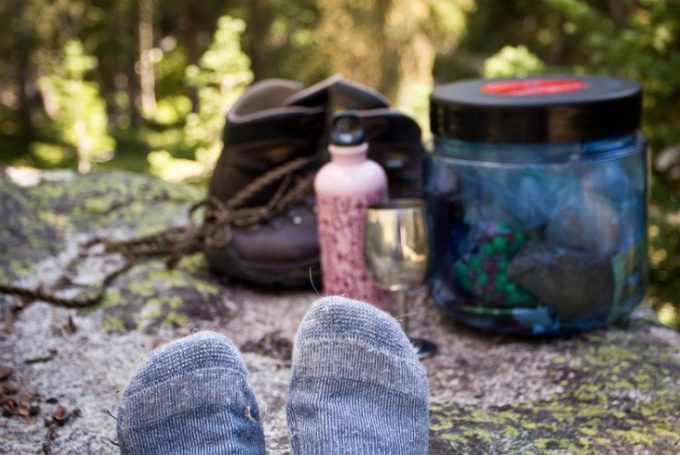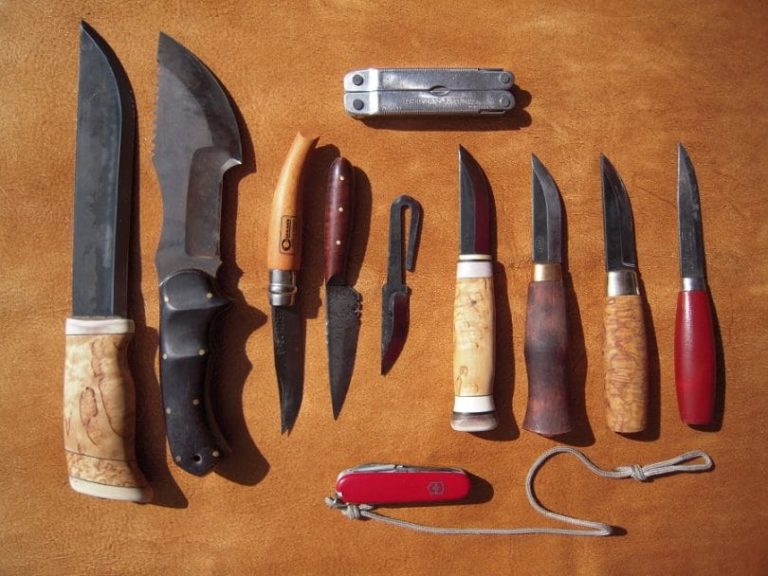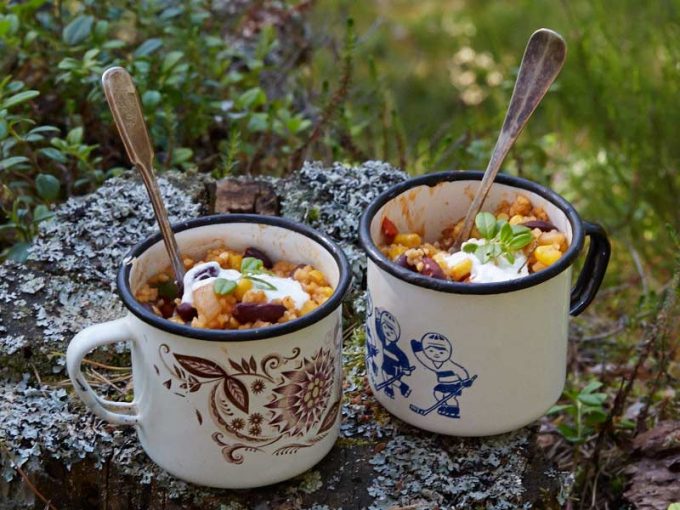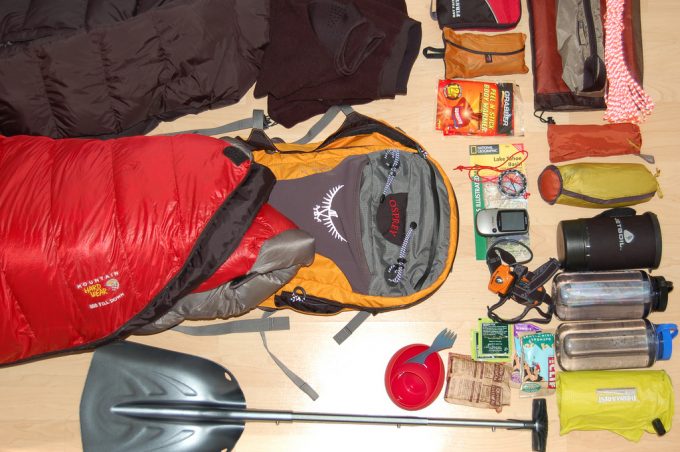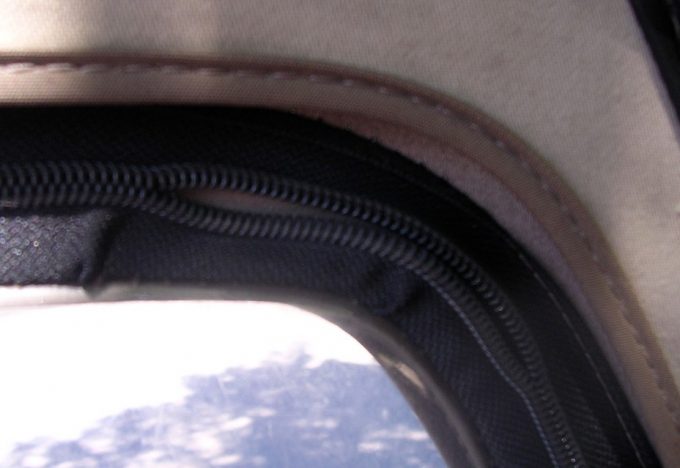How to Freeze Dry Food: Everything You Need to Know About This Food Preservation Process
If it’s your first time to go on a multi-day camping or backpacking trip, we’re sure one of the most important things you’re trying to learn is how to freeze dry food. After all, you need to eat while away from home, right? Freeze-drying food is one of the two options you have in preserving food for camping trips.
Freeze-drying may be the most practical approach here because the food has a long shelf life and wouldn’t add up to the weight of the backpack. It also results in better tasting meals. On top of that, it’s quick and easy to prepare.
Continue reading as we discuss thoroughly the process of freeze-drying food and the pros and cons of this process. You’ll also learn how freeze-drying compares to the other food preservation method backpackers use— dehydration. We’ll also give you a comprehensive guide to freeze-drying your food in time for your upcoming camping trip.
What is Freeze-Drying Food?
Freeze-drying food is a process wherein moisture and water content are removed from the food. Nutrients are left behind the freeze-dried food. This yields food which weighs a lot less, easier to carry around, nutritious and still as tasty as it originally did.
In the freeze-drying process, food is first exposed to freezing temperatures. It is then applied to a high-pressure vacuum to remove the water molecules. Then a gradual increase in temperature sucks out the remaining moisture from the food.
What you’ll get is food that retains its physical look, making it more appetizing for most people. The food is also preserved for re-hydration at a later date.
Freeze-drying food isn’t a new technology at all. During the Second World War, the process was used to transport blood supplies, bone, and penicillin. Then the NASA harnessed the technology to create the popular astronaut food, freeze-dried ice cream.
What Are the Pros of Freeze-Drying Food?
The following are the advantages of freeze-drying your food:
Eating Nutritious Food
Many campers are guilty of packing substandard foods such as noodles and other ready-to-eat meals. These foods are teeming with many unhealthy food preservatives.
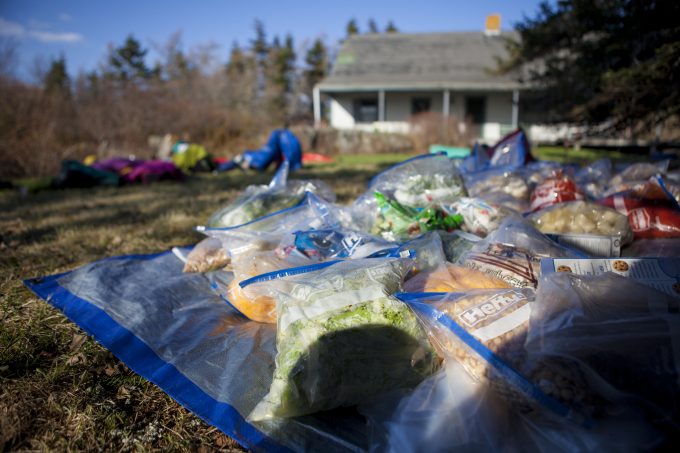
Freeze-drying, on the other hand, allows you to retain up to 97% of the nutrients of whatever food you prepare. You’ll be able to get the vitamins, minerals and other nutrients when you eat freeze-dried food.
You will also be avoiding preservatives and other low-quality ingredients when you prepare the food to be freeze-dried. Moreover, you will be consuming high-quality foods when you opt to freeze dry meals for your next camping trip.
Favorite Meals on The Go
It’s no secret that many food types are difficult to pack and consume outdoors because there’s no access to refrigeration. But with freeze-drying, you can enjoy your favorite food the next time you hike or camp. You can have lasagna, apples, potatoes and even ice cream.
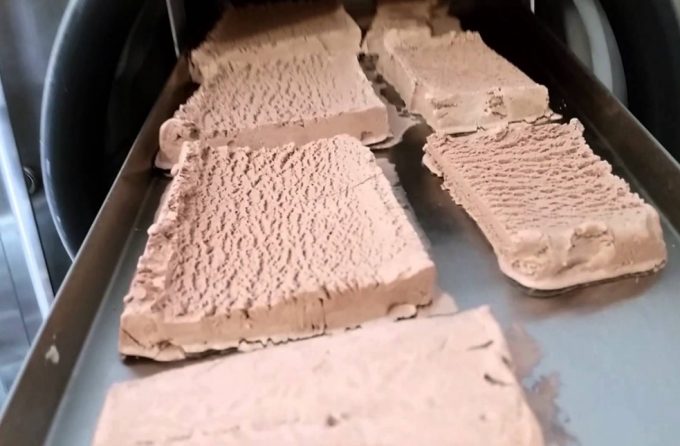
Almost any meal can be freeze-dried and packed in a backpack. Moreover, the food will taste and look exactly as it did on the day you prepared it. Simply put, freeze-dried food can make for an excellent dinner after a tiring day on the trail.
Easy to Pack
Do you know that up to 90% of the weight of fresh foods comes from water? By removing the water molecules, you’ll be packing food that is up to 90% lighter and easier to carry around. In fact, even military men are known to freeze dry foods. This way, one person can carry large amounts of food.
Quick to Prepare
When you are in the outdoors, you would want food that’s quick to prepare and easy to consume. Freeze-dried foods can quickly reconstitute. Simply add the food to boiling water and you’ll have a ready-to-eat meal in a few minutes. Many foods that are freeze-dried can also be eaten dry. Plus the taste, smell and texture of the food are retained. This means you’ll be able to enjoy and consume freeze-dried food.
Long Shelf Life
Freeze-dried food can last for years even when stored at room temperature. This is because water and moisture have been removed from freeze-dried food. Remember that bacteria, enzymes, and microorganisms are the main culprits of food spoilage. These organisms require water to survive.

Since freeze-dried food doesn’t have water molecules then it is shelf stable for many years. Freeze dried foods can last for an amazing 25 to 30 years. Indeed, freeze-drying foods can make you survive an apocalypse!
What are the Cons of Freeze-Drying Food?
While freeze-drying food has plenty of advantages, this food preservation process is far from perfect. The following are the cons of freeze-drying foods:
Method Might be Expensive
This is perhaps the main disadvantage of freeze-drying food. After all, the equipment required for the freeze-drying process is very costly. A typical home freeze dryer costs anywhere from $1500 to $3000.
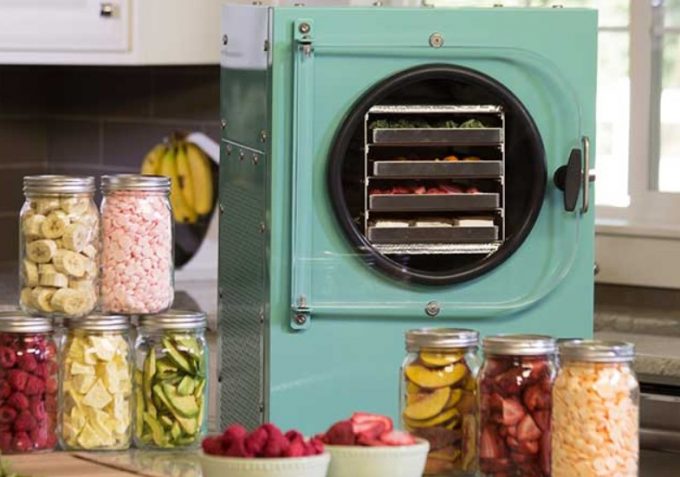
Prices will vary depending on the size of the machine and its features. However, we will teach you later on how to freeze dry foods without the use of a home freeze-drying machine later in this article.
Storage Problems
During the freeze-drying process, the foods will retain their original size and shape. Freeze-dried foods don’t shrivel up so you’ll need a bit of extra space in your bag for storing the foods. Freeze-dried foods are also not as compact as dehydrated foods.
The Difference Between Freeze-Drying and Dehydration
Freeze-drying is often confused with the other method of food preservation, dehydration. Even experienced campers and hikers think that freeze-dried food and dehydrated food are one and the same.
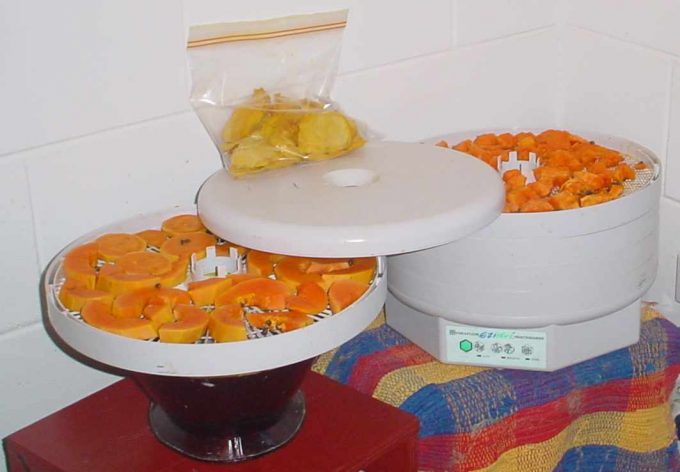
Both food preservation processes require removal of water and moisture from the food to prevent mold from growing. But that’s basically the only similarity between the two. The following are the key differences between freeze-dried and dehydrated foods:
Food Lasts Longer
Freeze-drying results in food with a longer shelf life compared to dehydrated foods. This is due to freeze-drying removing up to 97% of water in foods. In comparison, dehydration only removes 80% of water molecules.
More Nutrients
Freeze-drying retains the nutritional value of foods. Fiber, antioxidants, and phytochemicals remain intact even when foods are freeze-dried. Beta-carotene levels also don’t change during the freeze-drying process. There is also a minimal loss of vitamins A, C, and E in freeze-dried foods.
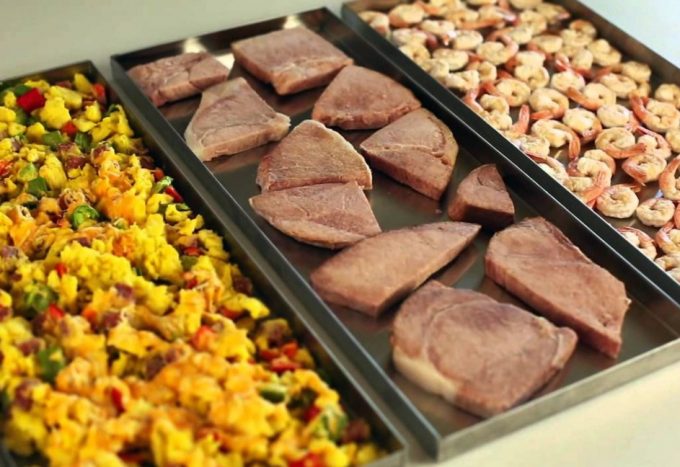
On the other hand, dehydrated foods lost up to half of their nutritional value due to the heating involved in the drying process. So if you care about nutrients, freeze drying is the way to go.
Improved Taste
Taste, texture, and smell of foods are retained during the freeze-drying process. Unlike in the dehydration process, freeze-drying requires minimal heat to remove moisture. As such, freeze-dried foods have better flavor compared to dehydrated foods.
Faster Rehydration
Freeze-dried foods can take 5 minutes or less to rehydrate. Simply place the food in hot water. On the other hand, it would take around 10 to 20 minutes for dehydrated food to rehydrate. If time is an issue, always opt for freeze-dried foods.
Preparing to Freeze Dry Food
Before getting into the actual freeze-drying process, we suggest that you prepare the foods first. You should also be familiar with foods that are can hold up particularly well after being subjected to this food preservation process.
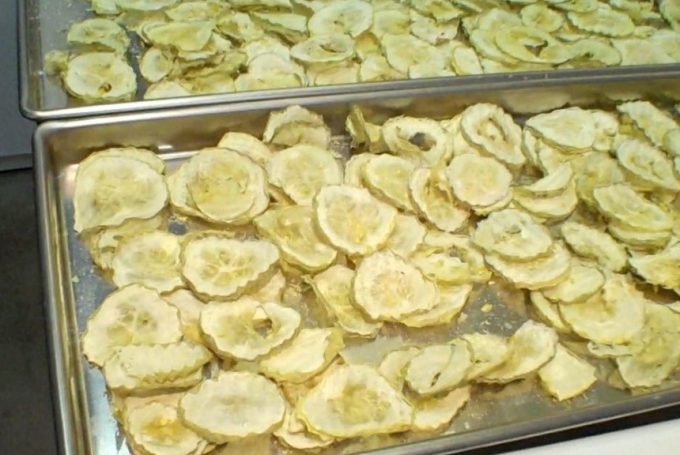
Foods with high amounts of water are highly recommended for freeze-drying. These include:
- Fruits such as apples, bananas, pears, and persimmons
- Vegetables like carrots, peppers, sweet potatoes and parsnips
- Beverages like coffee and juice
Freeze-dry the freshest foods possible because these are more likely to yield good-tasting food when reconstituted. Of course, we’ve said earlier that you can freeze-dry every food out there, from cheese to chicken to entire meals like meatballs and spaghetti. But we suggest you start with foods with high amounts of water first before freeze-drying other food types.
There are also other foods that you shouldn’t be freeze-drying because their texture hinges so much on their freshness. These include bread, cookies, and cake.
Using a Home Freeze-Drying Machine
As we mentioned earlier, a home freeze-drying machine can come in handy if you want to freeze dry food. This piece of equipment is relatively easy to use. First, place the fresh or cooked food in the tray and put it in the dryer. The food will then be subjected to low temperatures of up to -40 degrees Celsius.
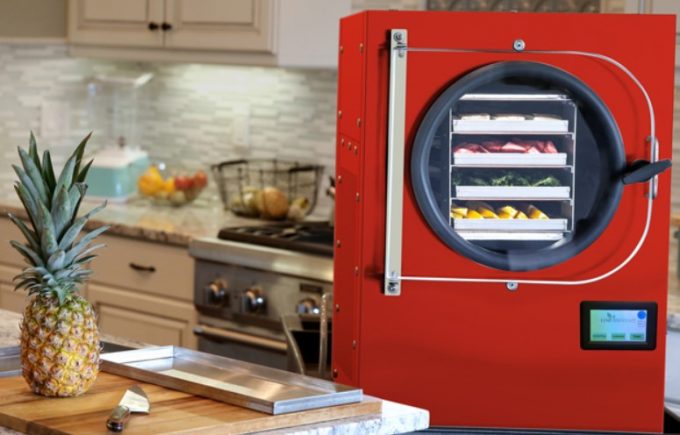
Once the food is frozen, the machine will create a vacuum around it. The freeze-dried food will be sealed to retain its freshness until it is opened. You can then add hot or cold water to the food so that it can go back to its original appearance.
Using a Special Chamber
You can also turn to a special vacuum chamber for freeze-drying food. Start by placing the food in the freezer for several hours. There should be no food in the freezer except for the food to be freeze-dried later. Don’t open the freezer too often so that the freezing process won’t be slow down.
Take out the frozen food and put it in the vacuum chamber. Adjust the setting to 120 m Torr with the temperature at 10 degrees Celsius. It would take at least a week for the sublimation of the food to finish. Once the food is completely dry or sublimated, remove it from the vacuum chamber. Transfer it to a storage bag. Seal it well.
Using a Freezer
Another way to freeze-dry food is to use your ever reliable freezer. While it would take several weeks more to complete the process using a freezer, the advantage of this process is that you obviously don’t have to shell out a lot of money to buy a special chamber or a home freeze-drying machine.
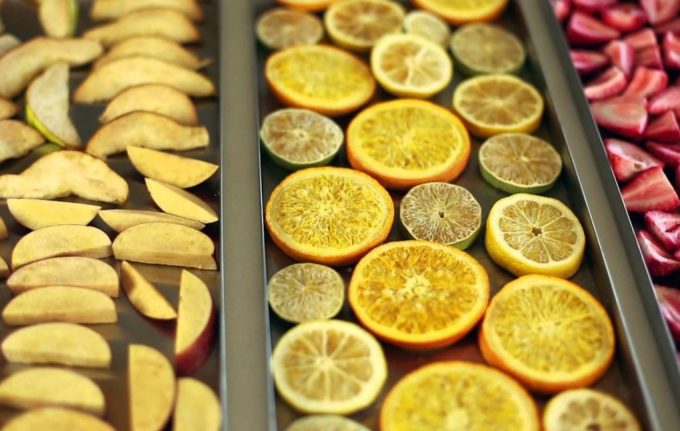
Start by chopping the food into small pieces. Transfer them to a small tray and place it in the freezer. The food will freeze during the first several hours in the freezer. The sublimation process will take longer—about a week or so.
You can check if the food is dry by taking a piece from the freezer and allowing it to melt. If the piece of food turns black, then it means that you should let it dry more. But if the food doesn’t change its color, then it means it is completely sublimated or dry.
Using Dry Ice
You can also use dry ice to freeze dry food. This procedure is almost the same as the process in the freezer method with the dry ice enabling the moisture to escape from the food.
Look for a large container that can hold twice the volume of the food to be freeze dried. You must also punch a couple of holes in the container to let moisture and gas escape. Put the food in large plastic bags then seal them. Then place the food together with the dry ice in the container. Put this in the freezer.
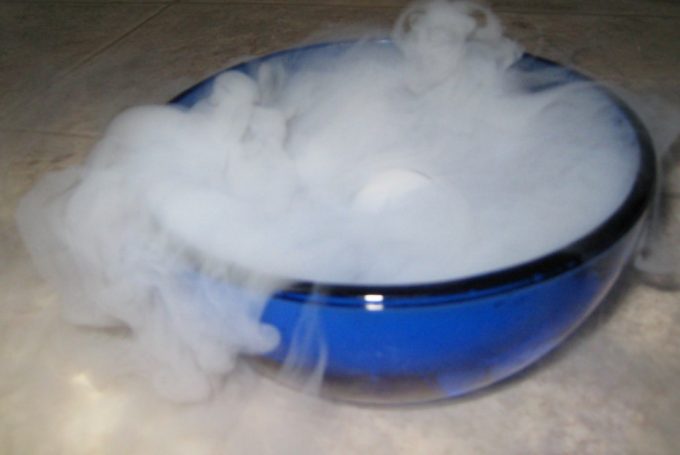
Check the container every now and then. You’ll know that the food is ready once there is no more dry ice in the container. Store the food in a plastic bag but make sure to push air out to prevent food spoilage.
On the Trail
In preparing freeze-dried foods for your next camping trip, we suggest you place the foods into Ziploc bags. You can group meals by placing them in the same bag—breakfast foods for bag 1, lunch meals for bag 2 and so on. Label each bag with essential information such as the name of the meal, amount of water you need to add and simmer time.
Reconstituting freeze-dried food is easy. Simply pour boiling water over the food then stir and cover. Let the mixture sit for 10 minutes. Some foods like pasta, though, would take a longer time to cook.
Time to Hit the Kitchen!
To sum up, freeze-drying is a practical and easy way to preserving your food for long camping trips. It can keep the food fresh for a long time. Moreover, it can retain the texture, taste, smell and nutritional value of food. And freeze-dried foods won’t add up to the weight of a bag which is something every hiker desires.
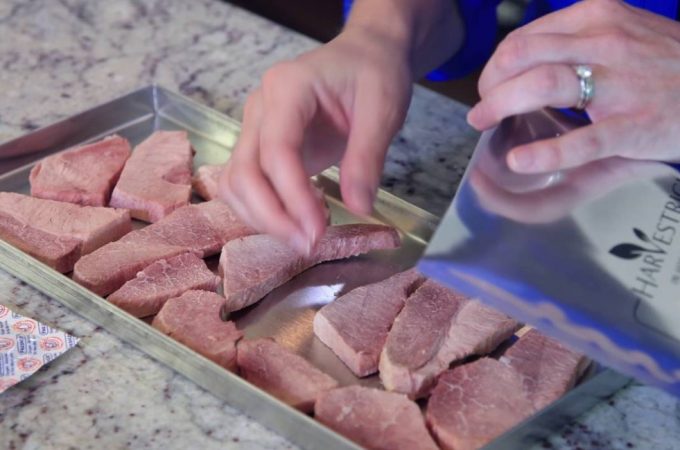
You don’t really need a home freeze dryer machine to try this food preservation process. As you have learned earlier, a freezer is enough for this purpose.
So are you ready to start freeze-drying food? But before you do so, give us a shout out first by writing in the comments section below. Don’t hesitate to post a question if there’s something you’re unsure of.

